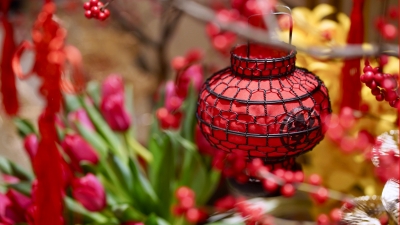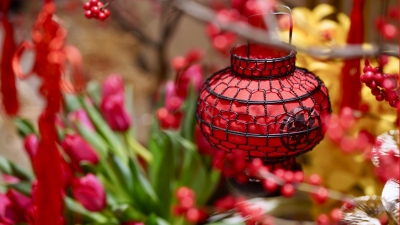A Way with Water: The Riverine Experience at Four Seasons Tented Camp Golden Triangle
Wild and compelling, the Golden Triangle is an expanse of jungle that spans the confluence of Myanmar and Laos along Thailand’s northernmost border region. Comprised mostly of mountainous terrain, this region has long been home to various hill-tribes and settlers from these three divergent nations. At the heart of this landscape, however, are its rivers that gurgle down from the hills to merge with the mighty Mekong as she weaves a majestic path through the Indo-Chinese Peninsula. One of her more remarkable tributaries as she flows south, the Ruak carves a snakelike path of its own through ravines and jungles before gushing into the much larger river, just a little south of Four Seasons Tented Camp Golden Triangle.
The arrival experience: Perched along the Ruak against a hillside with dense bamboo forest all around, the river offers a unique way of exploring the region, by journeying into the heart of Golden Triangle on a traditional long-tail boat. Under cover of the bamboo jungles, guests get a glimpse into the local way of life and experience, first-hand, what it is to navigate international waters – the riverine way! “Guests typically arrive at Mae Fah Luang Chiang Rai International Airport where they hop into the limousine for an hour to the Hirannakorn Pier on the Ruak River,” shares Paweena Waraha, Camp Manager. “The 15-minute boat ride to the Camp offers stunning vistas of the local way of life, with river-side dwellings and scenery on both banks as you course upstream.” A picturesque little sandbar in the middle of the river marks the Myanmar shore with its glistening paddy fields, and fisher-folk looking curiously on.
Traditional gong: “Our signature long-tail boat could ride in any season except during monsoon. The rides are on until 5:00 pm Thailand time as per operating hours of the immigration office,” she shares. The Mekong River and the Ruak River are considered international waters. Upon arrival, the guests are welcomed on the boat docks where a large, traditional gong is rung three times: one for luck; another for health; and the third for wealth. With this unique arrival experience, the stage is set for you to begin your expedition into one of Asia’s most intimate escapes.
The boat’s make: The long-tail boat is traditionally hand-crafted from local hardwood with an engine mounted on its stern. The propeller shaft can be 2 metres (6.5 feet) long or more and is designed to swivel more than 180 degrees, the defining feature of this type of boat (hence the name). These boats are lightweight and are carved into a pointed shape for optimum speed and navigability upstream. People usually refer to the “long-tail boat” as Reua Song Torn in Thai or a two-part boat. Typical to the region, these long-tail boats have been used by Thai people along the rivers, canals and marshes for generations, and are used for fishing, ferrying passengers and carrying merchandise.
Unmistakable sights and spots: At the pier, an enormous Golden Buddha Statue, the Phra Chiang Saen Si Phaendin, sits atop a barge-like base at Ban Sop Ruak, a popular spot for visitors to catch a ferry-ride across into Laos. “Stop for a moment and pose with the wonderfully-carved stone elephant statues before alighting our ornate, wooden long-tail boat,” she adds.
Marking the centre of the Golden Triangle, the temple courtyard of Wat Phra That Doi Pu Khao offers a fabulous vantage of the confluence as the ruddy Ruak flows into the silvery-grey Mekong. The Golden Triangle Monument Arch here at the temple pays homage to the three nations that converge at this point, with the distinctive styles of Chedi from each nation featuring on the Arch.
On the Golden Triangle excursion: “Look for the immaculately carved shrines and statue dedicated to Phraya Saenphu, the third king of Lanna Kingdom of Mangrai Dynasty, or stop to browse the quaint souvenir shops and come away with a keepsake to commemorate your visit to the Golden Triangle.”
“Guests can soak in the sights and sounds of the Golden Triangle, as they travel from one place to another, blending with the locals, hopping onto a songtaew followed by a tuk-tuk, to visit vibrant markets and the renowned ancient temple Chedi Luang,” says Paweena. “Our Camp Guides are very knowledgeable and will engage you with fascinating stories and interesting facts along the way.”
For almost a century, the cultivation of opium defined this forbidden land, as rogue militias and local warlords vied to reap reward from this contraband cash crop. A phenomenal effort by the Thai Army and appeals from the Late King Bhumibol Adulyadej saw the region transform completely rid itself of this vice. Now, the local tribespeople are proud growers of organic coffees, teas, fruits, and flowers, while tourism has brought worldwide recognition to the region’s natural beauty. Established by the Royal Family and dedicated to the history and people of the region, the Hall of Opium is a museum that details the history of opium and highlights the campaigns to end its cultivation. “Guests can visit the museum, and spend a morning learning one of the most unique histories that make the culture of the Golden Triangle so fascinating,” Paweena adds.

Bangkok, 10330
Thailand
Four Seasons Tented Camp Golden Triangle, Thailand
PRESS KIT









